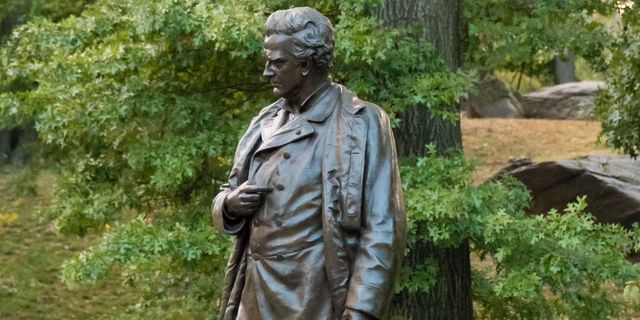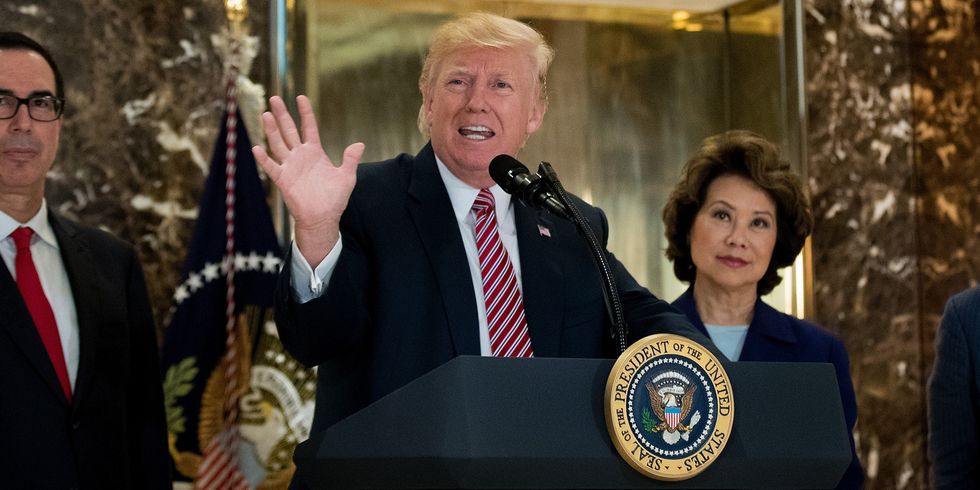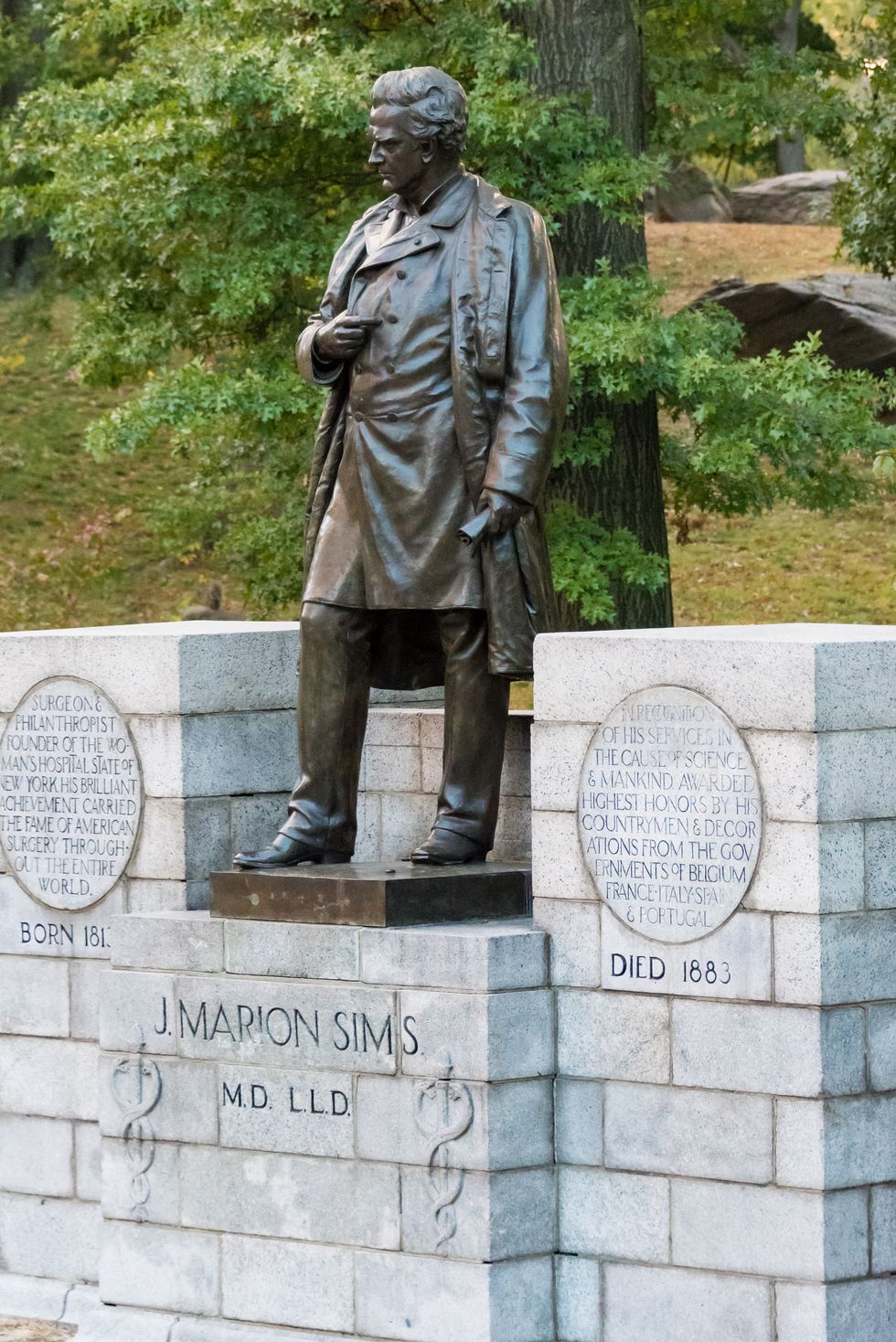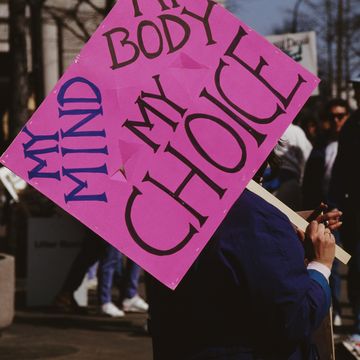The tension surrounding historical statues are mounting across America at the moment.
The recent move to take down Confederate General Robert E. Lee's statue was about as contentious as we've seen in the last decade or so, with white supremacist rallies leading to counter-protests and ultimately the unfortunate death Heather Heyer.
There is an argument that proposes we should not hold a historical figure to the ethical guidelines of our time and should leave monuments standing as a way to be in touch with our past, no matter how dark it is.
Donald Trump was seemingly a proponent of this line of reasoning, saying in recent news conference, 'This week it's Robert E. Lee, I noticed that Stonewall Jackson is coming down, I wonder, is it George Washington next week, and is it Thomas Jefferson the week after? You really have to ask yourself, where does it stop?'
He went on to say, 'George Washington was a slave owner. Was George Washington a slave owner? So will George Washington now lose his status? Are we going to take down—excuse me—are we going to take down—are we going to take down statues to George Washington? What about Thomas Jefferson?' Trump said. 'You know what? It's fine. You're changing history, you're changing culture.'
Others have countered this sort of argument by suggesting that removing statues of those linked to the unsavoury parts of history might help to change racist attitudes in the present, as the statues remaining erect served to validate these negative attitudes.
According to this argument, whilst the darker parts of history must be remembered, they are better served in a museum, opposed to heralded on the streets of a city where they currently look down on the people they would have enslaved.
But, symbols of white supremacy are not only found in those who fought for the South in the Civil war.
The women of the Black Youth Project 100 are answering Trump's 'where does it stop?' with a defiant, 'not here'.
[facebook ]https://www.facebook.com/BYP100/photos/a.576630629054939.1073741825.576628419055160/1542571469127512/?type=1&theater[/facebook]
One part of American history that has has a difficult relationship with race is that of reproductive healthcare.
Arguably, the beginnings of modern American reproductive healthcare came hand in hand with the promotion of eugenics - the idea of 'selective breeding' to wipe out 'weaker' parts of the human species, most often along racial lines.
Even Margarent Sanger, the founder of Planned Parenthood, was a eugenics enthusiast.
It was also common for women of colour to be tested on - like we have historically tested products on animals - for birth things such as birth control and gynaecology, for the safety of white women.
One of the pioneering Gynaecologists who used black women as medical guinea pigs wasJ. Marion Sims.
The so-called 'father of modern Gynaecology' has a statue outside the New York Academy of medicine.
In the 1800s Sims apparently purchased and rented black female slaves to perform new surgeries upon.
The women of BYP100 took to the streets earlier this month to protest his statue and posted this now-viral photo to their Facebook page.
[facebook ]https://www.facebook.com/BYP100/photos/a.577719128946089.1073741828.576628419055160/1550909888293670/?type=3&theater[/facebook]
The caption reads:
J. Marion Sims was a gynaecologist in the 1800s who purchased Black women slaves and used them as guinea pigs for his untested surgical experiments. He repeatedly performed genital surgery on Black women WITHOUT ANAESTHESIA because according to him, 'Black women don't feel pain.' Despite his inhumane tests on Black women, Sims was named 'the father of modern gynaecology', and his statue currently stands right outside of the New York Academy of Medicine.'
In a video for NowThis, one of the protest organisers Seshat Mack explains why America must remove idols of white supremacism in order to confront the racism that still exists, as well as detailed the true horror of what Sims did in the name of science.
'We cannot get over our history of white supremacy until we acknowledge it,' she says in the video.
'When we say that this country and its institutions are literally built on the bodies of black people, we're not exaggerating, and we're not lying.'
City Councilwoman for New York Melissa Mark-Viverto agrees. She told the New York Times, 'It has got to go.'
Again, Sims' work must obviously be remembered, he was instrumental in modern gynaecological practise, however, does someone who treated black women so terribly need to be memorialised in such a way?
Daisy Murray is the Digital Fashion Editor at ELLE UK, spotlighting emerging designers, sustainable shopping, and celebrity style. Since joining in 2016 as an editorial intern, Daisy has run the gamut of fashion journalism - interviewing Molly Goddard backstage at London Fashion Week, investigating the power of androgynous dressing and celebrating the joys of vintage shopping.















